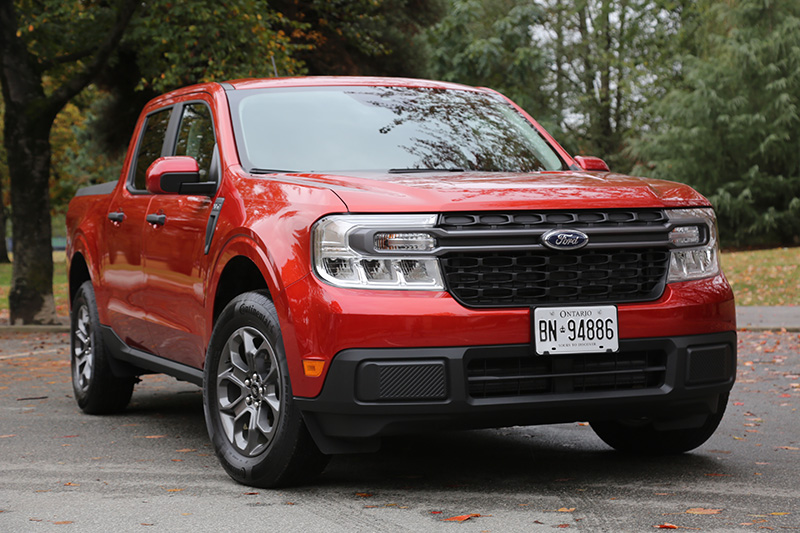
If we told you there was a compact, hybrid pick-up you could buy for under $30K, would you be surprised? We were, too, when we got into the Ford Maverick Hybrid. Not surprised that Ford could build such a vehicle, but yes, surprised that a vehicle so frugal and useful would start at such a low price.
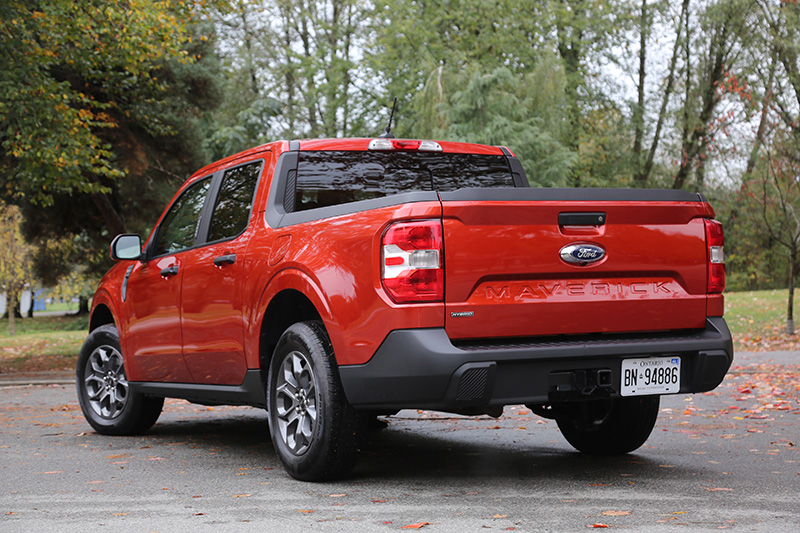
The Maverick XL base model is lightly equipped and costs but $27,750. We tried out the XLT model with more and nicer equipment, which originally cost $28,500 before Destination and Delivery charges (which were $1,995), but, according to the Ford Canada website, now costs $30,350 plus D&D. The current new car sales landscape is ever changing, and Ford’s supply of Mavericks may be limited due to high demand. In any case, that is still a low price, even if it is above the $30K level.
The way the Maverick is being marketed, the hybrid front-wheel-drive models are the “base” ones, with the turbo EcoBoost-powered 4×4 models, including a Lariat, being the higher-end ones. From this, you can rightly conclude that the hybrid’s engine is not the hot turbo four, but is a normally-aspirated 2.5-litre unit with no pretense of high performance. In fact, it takes the electric motor to combine with the engine to put out 191 horsepower. This is enough for normal everyday usage around town, and it is quiet and refined in anything short of heavy throttle use, which is when you are reminded that the transmission is a CVT automatic that lets the engine sit at that higher rpm until the road speed catches up with it.
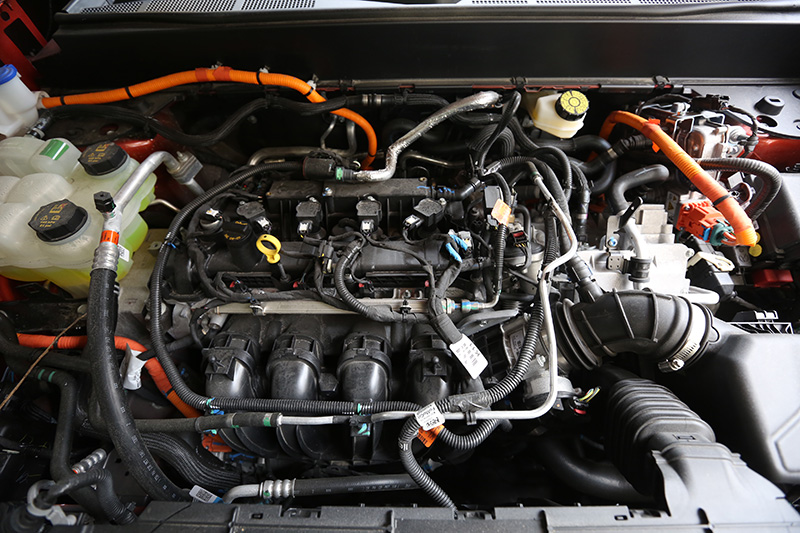
But of course, the essence of driving this vehicle is its electric capability. Driving it around the city with a very light foot, and then checking out the info read-out that tells you how far you got on the two different means of propulsion, most times, the all-electric distance was more than the gasoline distance. In fact, it made us think that in a day of urban driving, you wouldn’t be far off from what a plug-in hybrid would deliver in electric-only driving. Transport Canada rates it at 5.6L/100 km city, but we saw the 4.0L range, outstanding for a heavier vehicle. Like all hybrids, highway consumption is higher, and after a longer trip with about 90 percent highway, we still saw 5.4L/100 km come up on the trip computer.
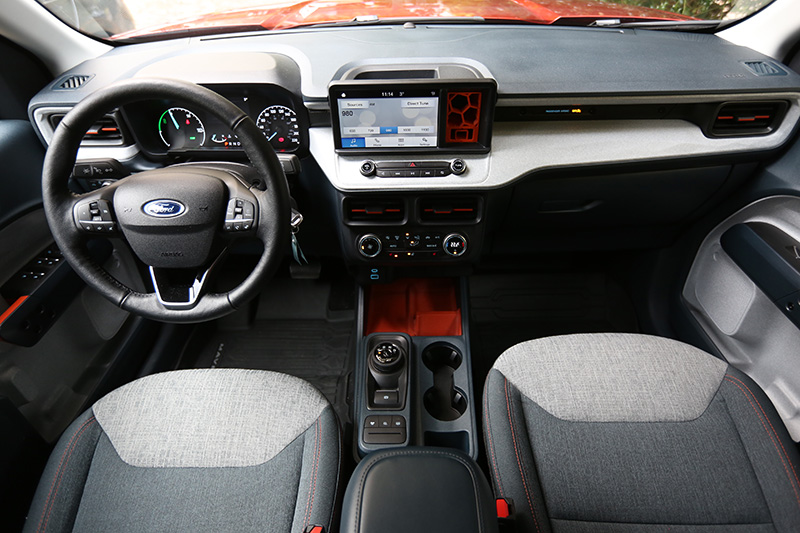
The Maverick comes only as a four-door five-passenger “crew cab” and the front passengers get plenty of room and comfort. Our XLT had the “luxury package” for $3,300, which included 6-way power driver’s seat, and that combined with a longer-than-usual bottom cushion yielded good comfort for a longer-legged driver. The back seat is a bit tighter for adults in legroom, and the near-vertical back cushion will not have any adult wanting to ride in there all day. Still, it is useful space for a small pick-up, made more so in that the bottom cushion swings up to give access to a small storage compartment underneath. More on that later.
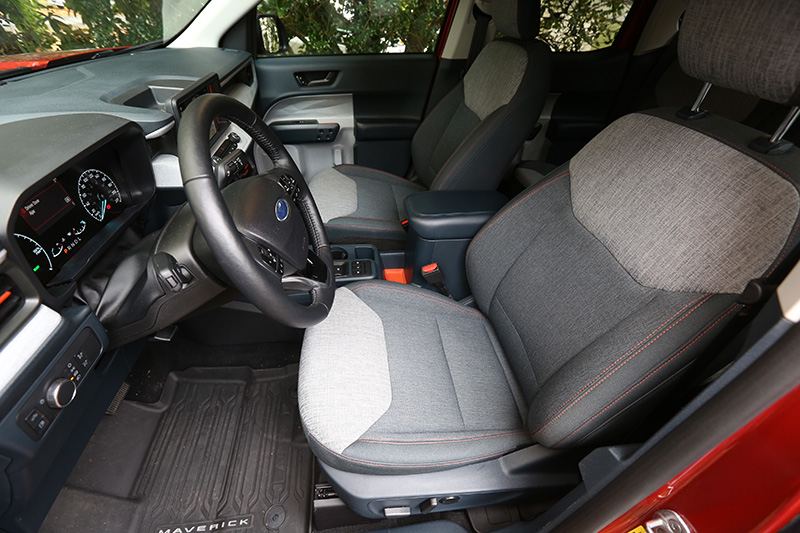
As one might expect, the Maverick is aimed at a younger buyer, and the interior design and trim reflects that. The seats were in a good looking “technical” fabric in two-tone grey, as is the rest of the interior trim. We are not sure what is happening on the door panels with large cut-away sections in light grey. And the small screen on the dash looks like it could have been a couple of inches bigger than it is, given the size of the housing it is in. Instead, there is this weird honeycomb-style orange plastic insert beside the screen into which I suppose you can put a pen or rolled-up piece of paper. And it can’t be removed. But I’ve seen another Maverick without one.
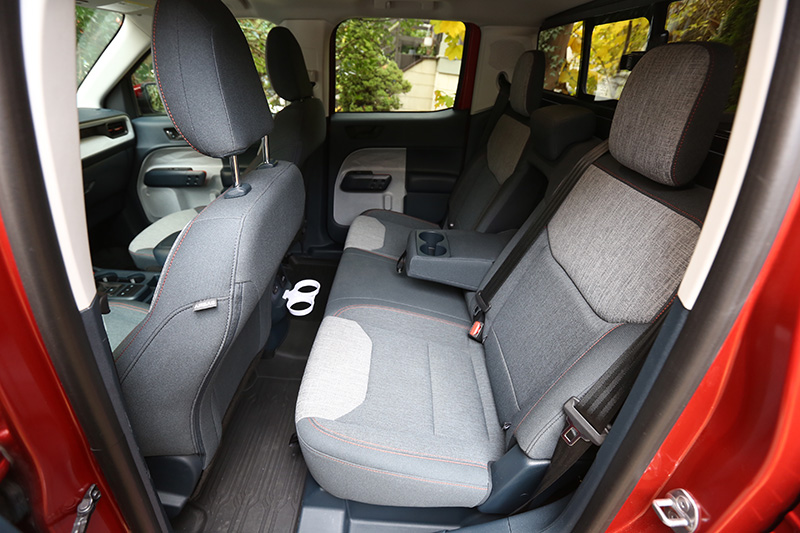
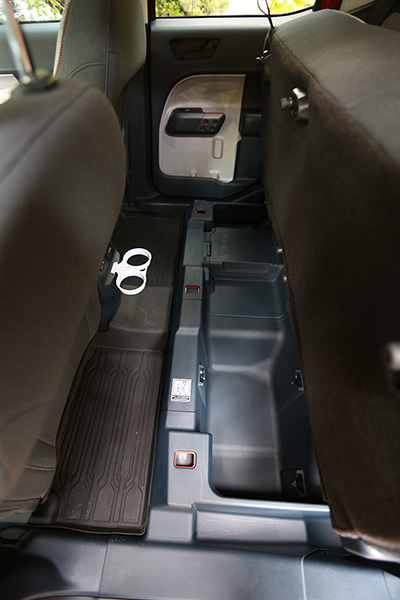
Being an actual pick-up, the Maverick does have a bed in the back. This is a compact vehicle with two rows of seating, so the bed is short, all of 4.5-feet long. The spec sheet for our tester did list an optional bed extender, but it wasn’t installed so we can’t comment on its usefulness. What does look useful are all the tie down hooks back there, ten in all, including two on a sliding track on the upper side of the box. Our tester also had the optional spray-in bed liner.

So there is space in the back to toss bicycles or other sports equipment up to a maximum payload of 1,500 pounds, and the maximum towing weight is 2,000 pounds. So you could conceivably tow a light trailer with a jet ski or small motorcycles on it. This makes the Maverick a good choice for an active urban person or couple who like their outdoor recreation but don’t need a bigger truck and, of course, appreciate the efficiency of the hybrid powertrain.
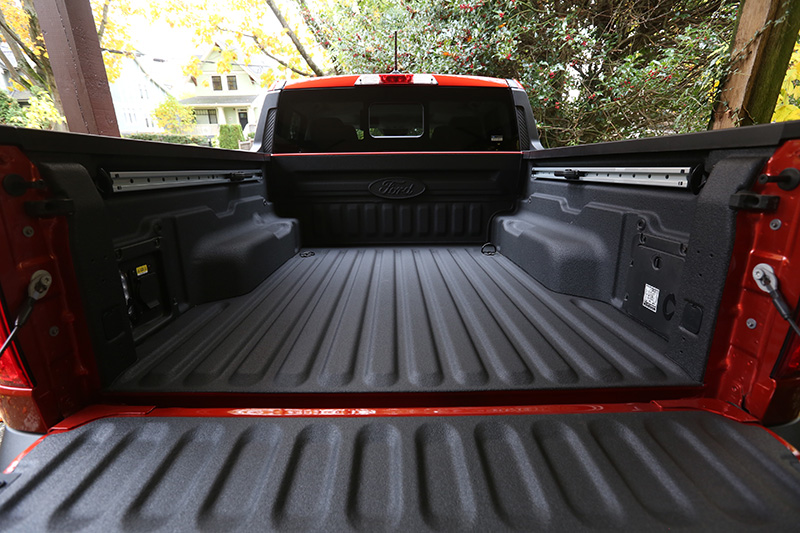
What will be an issue, as it was for this writer, is enough dry and secure storage for luggage and personal items which might have great value, like camera equipment. There is certainly room on top of and underneath (to a point) the rear seat, but then you won’t be putting people back there too. What all this is trying to say is, that any time you go somewhere, you will be having to consider the security risks to your belongings, and most of the time, leaving the bed empty while everything else is crammed inside, covered in dark blankets, or visible through the tinted windows, if they are too big for the under-seat storage. This is by no means just a Maverick issue, but it is with any pick-up that comes from the factory without a lockable tonneau or metal box in the back. Of course, Ford and the aftermarket have no end of products to address these concerns, but not for that initial low price.
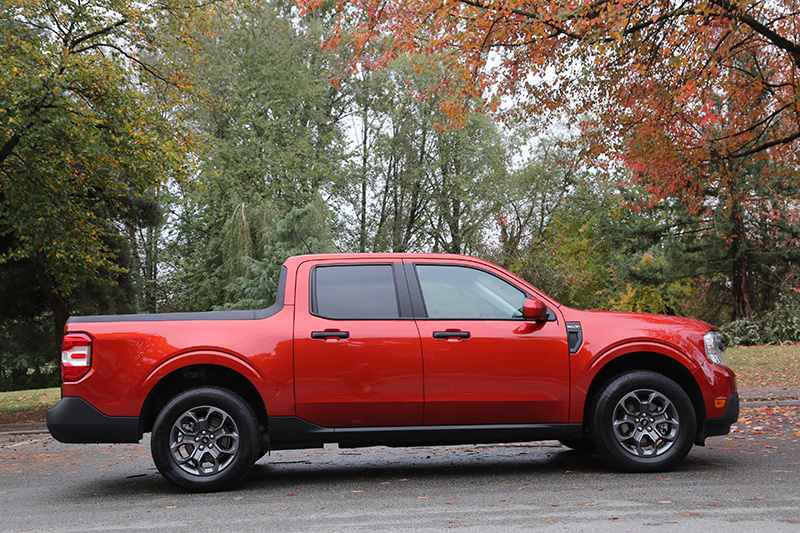
So, for these reasons, and like any other vehicle, one must consider the use to which it will be put the most. If you are a person with lots of recreational gear who likes the pick-up image and appreciates low price, comfort, easy handling and frugal operation, the Maverick Hybrid is a great choice, and you’ll probably just deal with interior storage situations as they arise. But the Escape Hybrid and Bronco Sport (both available with all-wheel drive unlike the Maverick Hybrid) are built on the same platform and have secure covered cargo compartments. Something to consider.




